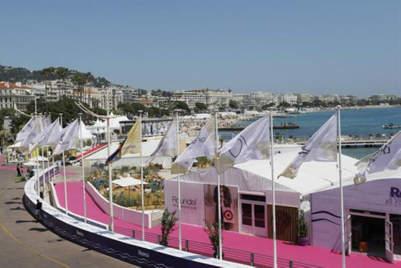
From 1,259 entries, 62 Lions were awarded in Mobile Lions with the Grand Prix claimed by 'NYT VR' executed by T Brand Studio for The New York Times. The virtual-reality campaign, a partnership with Google, GE and Mini, was described as "a defining moment for mobile" and demonstrates how this discipline can support a 165-year-old news brand to thrive.
“It went beyond the initial wow factor to unlock levels of empathy and excitement no other medium could,” said Poynton.
The irony behind Asia’s minimal representation
Asia is seen globally as one of the most mobile-manic regions, yet it fell short in its Mobile Lions performance this year.
Poynton said he was surprised that within Asia’s large selection of messaging apps, like KakaoTalk, Line and WeChat, there was little representation of any of them in the category. "Asia is so lucky to have such atomised apps like WeChat," he said.
On the other hand, messenger apps based overseas like Facebook's WhatsApp, successfully showcased creative usage. For example, a campaign called WhatsGerman won a Gold for helping refugees learn the German language using only the WhatsApp app.
“Although Asia is ahead in mobile usage and market penetration, they are not entering their work into award events such as Cannes,” said Poynton. This is stopping Asian mobile creativity from gaining the recognition it should be striving to achieve. “It still remains a mystery to me as to why Asian agencies are not exploiting these possibilities,” he added.
Even when they do enter their work, a few mobile entries from Asia this year were seen as copycats that recycled past work. Poynton personally found one case from China, which he preferred not to disclose, using "exactly the same newsreel footage as another case from another part of Asia from the previous year, while addressing exactly the same cause".
Additionally, Poynton also criticised mobile entries that involved merely coupon-sharing, a popular tactic especially in China, which he deemed unoriginal and unworthy of winning awards. “There are so many brands that say ‘share this and you’ll get this thing for free’. We as a jury just don’t think that is good creativity. It shouldn’t just be about how quickly you can make sales,” he said.
Last year's Mobile Lions saw location-based services used as an accelerator for sales via the mobile phone, he noticed. Poynton asserted that “mobile technology should go beyond the mobile phone”. Campaigns that made use of the mobility of devices to make a difference in new and innovative ways was what the judges were looking to award, he explained.
The Helpmet, designed by the Thai Health Promotion Foundation, was "a leap above the rest" in mobile innovation and was acknowledged for its ability to have multiple functions, from self-dialing emergency numbers when its wearer was unconscious, to the measurement of his or her biometrics. Although there are only 500 Helpmet helmets in circulation, Poynton hoped that the recognition it got at Cannes will help increase the scale of the project and secure commitment for more manufacturing.
Other standouts include Samsung’s Blind Cap that is actually a swimming cap with built-in vibration technology (via bluetooth) that lets blind swimmers know, with zero latency, when to make a turn at the end of a lap. (Editor's note: Samsung is a client of Cheil). Although niche, it uses a mobile app creatively and is clear in how it will lead to reforms in sports.
“The point here is that brands have a role in society that they couldn’t have in advertising, because mobile has the capability to extend into marketing as well as to enable people's abilities," concluded Poynton.
"I call it enablement," he said.
Side note about I Sea
Poynton and his jury members "threw out" the I Sea entry in the mobile category, he revealed, because the "case video for I Sea said something very different to the written case study".
"When you have all these tech specialists together in a judging room, someone will raise a kink if they found one. The jury is in a frame of mind where a lot of smaller things are scrutinised. These are indicators of inconsistencies and quickly suggest there is something less than authentic about an entry.


.jpg&h=334&w=500&q=100&v=20250320&c=1)

.jpg&h=334&w=500&q=100&v=20250320&c=1)

.jpg&h=334&w=500&q=100&v=20250320&c=1)
.png&h=334&w=500&q=100&v=20250320&c=1)




.jpg&h=268&w=401&q=100&v=20250320&c=1)

.png&h=268&w=401&q=100&v=20250320&c=1)




.jpg&h=268&w=401&q=100&v=20250320&c=1)